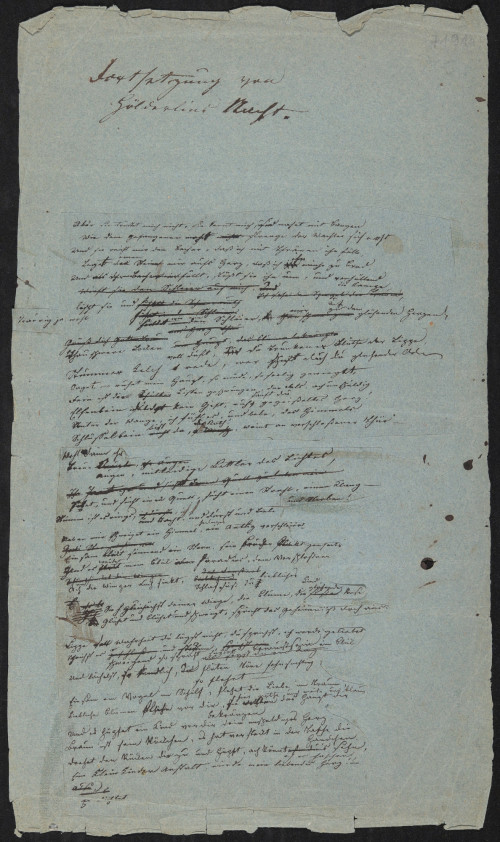For the Berlin Academy exhibition of 1810, Caspar David Friedrich submitted a “Seascape”. The Monk by the Sea, as it is now called, is today one of the Romantic artist’s most famous works. When it was first presented to the public, the viewers were as perplexed as they were fascinated.
Born in Greifswald in 1774, the painter Caspar David Friedrich studied art at the academy in Copenhagen and then moved to Dresden in 1801. Landscape was to become his main subject matter. His ties to Dresden would endure; he started a family, kept company with artist friends, and belonged to the art academy there. After his death in 1840, it would be decades before his importance for art history was recognized in its full magnitude.
The Monk by the Sea departs from the traditional rules for landscape painting. A narrow strip of sand with a solitary pondering figure on it, a dark sea, and a vast sky in green and blue lend the work a quality of endless void and bring thoughts of transience and infinitude to mind.
Among the visitors to the 1810 exhibition were Achim von Arnim and Clemens Brentano. In their text Various Emotions upon Viewing Friedrich’s Seascape with the Capuchin Monk, Shown at This Year’s Art Exhibition, they attempt a linguistic analogy of the image. Brentano begins, describing his feelings in response to the painter and his work. Then he imagines himself at the seashore: “In this way, I became the Capuchin monk and the painting became the dune; the sea, which I looked for with longing, was entirely absent.” Finally, Brentano relates the conversations amongst the viewers around him “as belonging to the experience of this painting”. One scene follows another, quoting the more or less witty remarks of gentlemen, ladies, and children. The final dialogue was written by Arnim, as the handwriting reveals. Now the narrator talks to a young man, thus creating new scope for the poet’s personal impressions. Excerpts from the text are heard in the film installation.
Arnim and Brentano submitted their text to Heinrich von Kleist, the editor of the Berliner Abendblätter. Kleist shortened and revised it substantially, then publishing it with the signature “cb”. Brentano and Arnim protested, prompting Kleist to release a declaration in which he took responsibility for the text.
King Friedrich Wilhelm III purchased The Monk by the Sea and it remained in Berlin. To this day, Friedrich’s painting still sparks many a thought and conversation, thus manifesting the Romantic idea that the artwork continues in the beholder.

